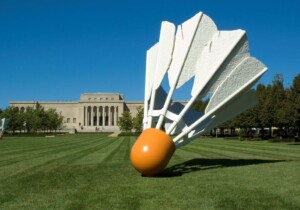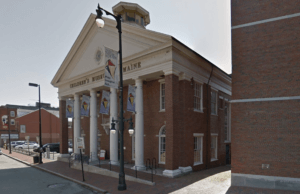Without further ado, Centre Pompidou is slated for a major five-year renovation. The highly recognizable, high-tech art museum in Paris’s 4th arrondissement designed by Richard Rogers and Renzo Piano will soon be adapted by lead architect Moreau Kusunoki, a French office founded by Nicolas Moreau and Hiroko Kusunoki. Mexico City–based Frida Escobedo Studio is associate designer on the high-profile commission.
Plans to modernize the building were first announced in 2020. A competition followed which Moreau Kusunoki and Escobedo ultimately won. The $280 million renovation plan is officially called Centre Pompidou 2030: The building will close to the public in 2025 and reopen in 2030.
Moreau Kusunoki and Escobedo are collaborating with French engineering firm AIA Life Designers on the job. The design team is also consulting with Renzo Piano, who served on the competition jury. “It’s really an honor,” Kusunoki told AN. “Renzo and Richard won the competition to design Centre Pompidou when they were in their thirties, and we aren’t that much older. We are the generation of architects that grew up with this building. That’s why it’s so important for us to stay true to its original concept.”

The renovation will yield important improvements like ADA upgrades, adding much needed floor area, asbestos will be removed, and there will be better natural light inside Centre Pompidou’s deep floor plates. Equally prescient, Moreau Kusunoki hopes to reinvigorate the building’s trailblazing past.
“Centre Pompidou was founded in the 1970s on socialist ideals,” Moreau said. “It was so avant-garde when it was built, and it’s still avant-garde. The architects imagined the museum as a social tool, a place for everyone, a place where everyone can feel like they fit in. And that was a big, big shift. We are still nourished by these ideas.”

Indeed, when Centre Pompidou opened its doors in 1977, it changed the way people thought about museums forever. The steel and glass building by Renzo Piano and Richard Rogers was the dialectical opposite of the Louvre, Paris’s other iconic art museum. The Louvre is bourgeois, its appearance is bulky and heavy, and its innards are filled with stolen treasures from French colonial missions. Centre Pompidou is proletarian to its core, its facade is light and airy, and its art is unapologetically modern.
The structure and HVAC systems are what make the building function, the young architects posited, so why hide it? The design by Rogers and Piano was inspired by Cedric Price’s Fun Palace and other luminaries like Archigram. Its philosophy took cues from the May 1968 uprising which rocked Paris and made Charles de Gaulle head for the hills: Out with the old and in with the new, Marxists screamed in the streets, much like the Paris Commune a century earlier.

Moreover, the structure was never intended to stand still: Both Rogers and Piano envisioned renovations happening every 25 years at the building to ensure it remained in-sync with the times. Now, after fifty years, those renovations will happen.
Moreau Kusunoki told AN that their project at Centre Pompidou will maintain the iconic building’s polychromatic CIAM grid tubing and its steel and glass skeleton. Interiors will be adapted to increase natural light access, and over 70,000 square feet of usable space will be inserted below grade, in the exhibition areas, the library, and rooftop for additional capacity. The single-story art gallery that faces Centre Pompidou’s plaza, Atelier Brancusi, will have its facade opened up to allow in natural light. A space specifically catering to children will also be included.

Multiple places in the building that are currently not accessible to the public will become accessible, like the rooftop and library. The design team is also working to make the entry procession less confusing by “liberating the ground” they said. “One of our most important goals is to bring more natural light into the deeper part of the building, because it’s very massive,” Kusunoki told AN.


Today, Moreau Kusunoki is known for its award-winning Guggenheim Helsinki proposal from 2015; and they’re also designing the Parramatta Powerhouse Museum in Sydney, Australia. Much like their stunning competition drawings for Guggenheim Helsinki, Moreau Kusunoki has rendered their renovation plans for Centre Pompidou with a painstakingly detailed, beautiful, hand drawn axonometric drawing.

“[Centre Pompidou] is based on the idea that museums should be free and shouldn’t require a ticket,” Moreau shared. “The architects envisioned a place of encounter where you can find all types of art like performance, dance, cinema, visual arts, photography, all for free. If you go to Centre Pompidou today, you will see homeless people and refugees, and no one ever asks them to leave because of the building’s spirit. We want to keep this spirit alive so it remains a platform open to everyone.”
Centre Pompidou will officially close in summer 2025.











